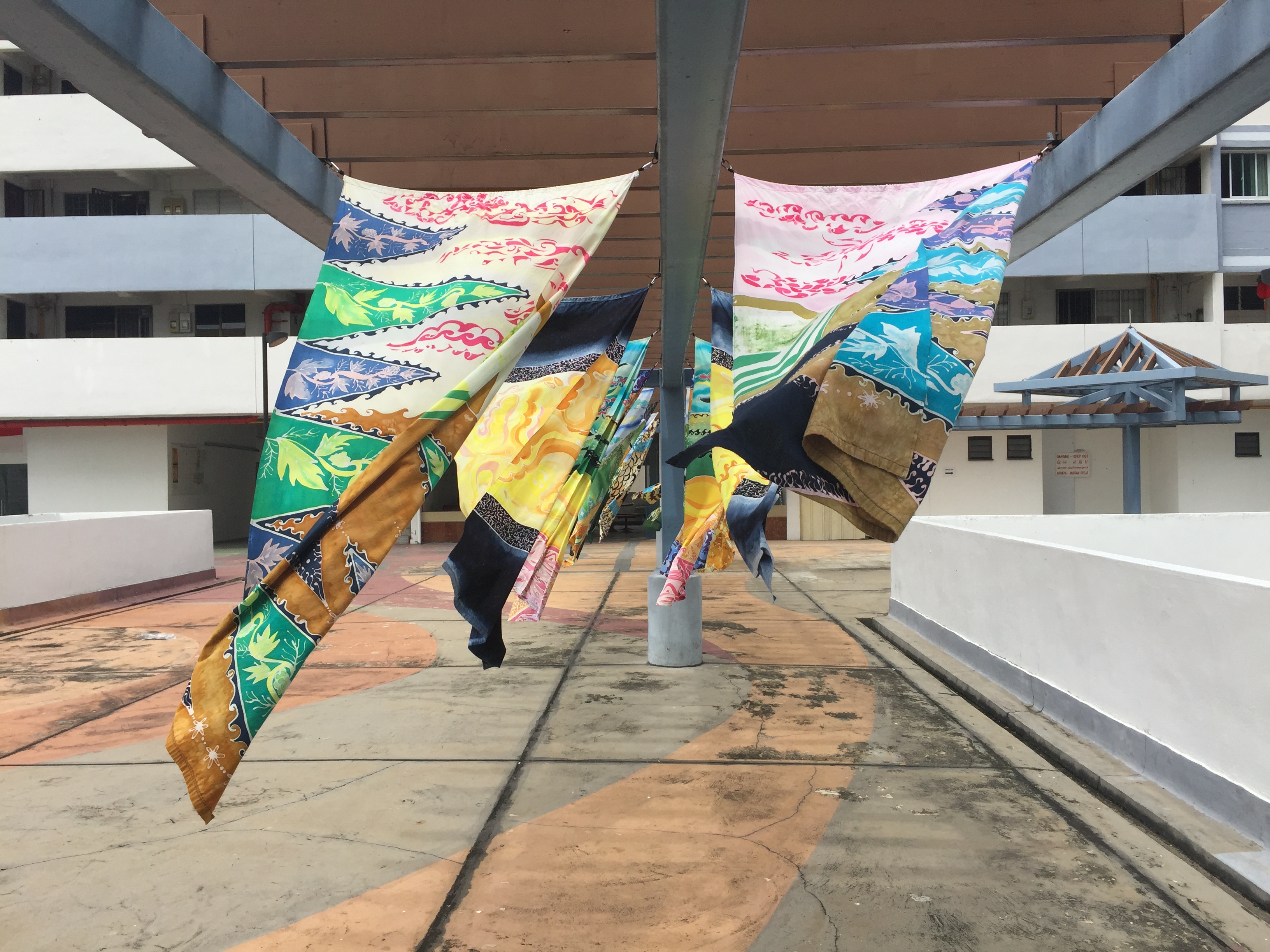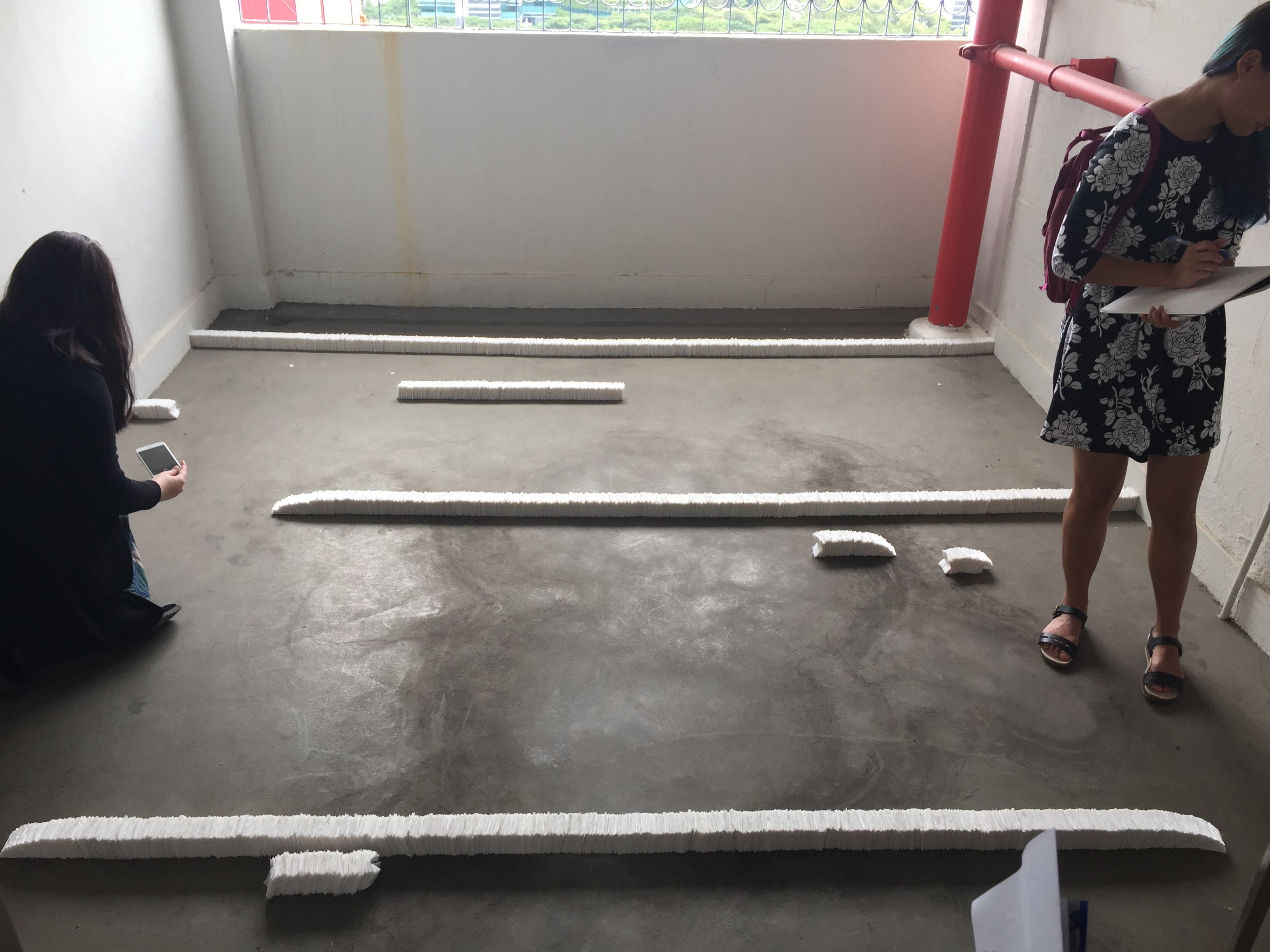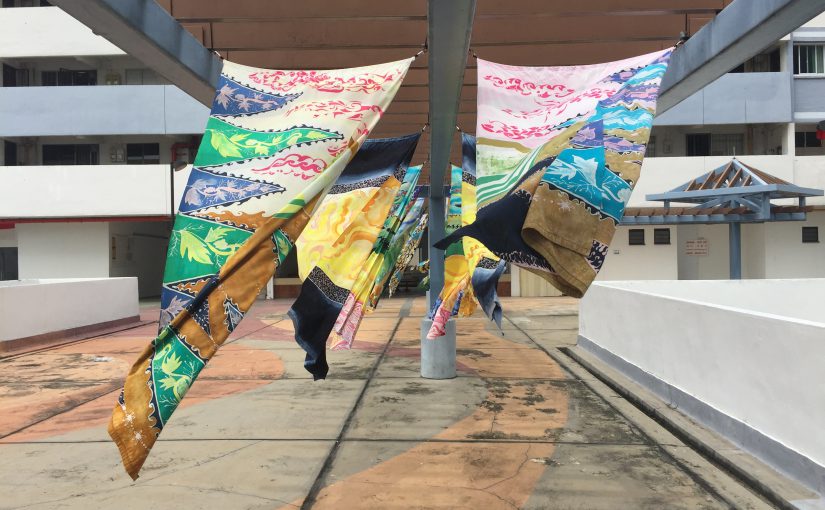The following two art pieces from Waterloo centre caught my attention.

Artist: Fajrina Razak
Title: Jalan Nan Juah (Far Distant), 2017
Medium: Batik painting on cotton, bamboo poles
“This artwork comprises 9 sets of contemporary batik paintings infused with tradition textile motifs. The imagery is inspired by Banyumas, a regency in Central Java, where the artist’s ancestors originate. The artist invites viewers to pass in between the paintings, creating a short journey through the work, and by extension, through the artist’s identity.”
—
Review
When I first caught a glimpse of this work, it reminded me of my childhood — I went on a family to Melaka when I was around 7 years old, and the hotel we were staying in had a batik painting session. It also reminded me of how my family used to wear batik printed pajamas many years ago.
I felt that the artist made great use of the windy and rustic environment to give their art piece its traditional mood. From the text, the main topic of interest is the artist’s identity, and I felt that the work greatly represented this idea and traced her traditional roots. The way the batik paintings were done on a thin piece of cotton and the vibrant colors used were able to express the traditional Javanese culture effectively.
However, I feel that the motivations in this piece will only be able to get across a few people, ultimately only those who have experienced a part of Javanese culture before. In my case, the text related to my initial impression of the piece – cultural identity. If it were to be shown to other people who have not experienced a part of Javanese culture before, it would be great if the artist could, keeping the environment in mind, present more artifacts or items of the Banyumas to further accentuate the idea of the artist’s identity in this art piece.

Artist: Chan Jia Yu
Title: So Far Yet So Near, 2017
Medium: Plastic bags
“This work explores the idea of temporality, stemming from the artist’s interest in how quickly plastic bags transform from an essential into trash. The installation focuses on the lightness and translucency of the plastic bag, and the natural elements of wind and light can alter our experience of this common object.”
—
Review
Walking into the space where the art piece was installed, I first thought that the rows of white were clay, but after squatting down to get a closer look, I realized that they were actually rows of plastic bags, cut out into squares and put together. This art piece first encourages you to examine the installment more closely, then engages you to think of the possible motivations of the artist.
However, I feel that there is not much of an emotional response, other than curiosity. I also feel that the art piece was rather vague in terms of its meaning, and I could not discern what exactly the artist’s motivations were. Why cut the plastic bags into square pieces? Why were the plastic squares placed together in such a fashion? Was it because of the way plastic bags are sold in bulk? The text does not fully explain the arrangement and fashion of the medium, which frustrates me a lot.
I personally feel that the way the plastic bags were placed did not help with the idea of focusing “on the lightness and translucency of the plastic bag”, as they were packed too densely together and the wind could not affect them much. The artist could perhaps improve on this by hanging the plastic bags from the ceiling or pipes instead to emphasize the lightness and translucency of the plastic bags. The plastic bags could also be shredded or be torn in some ways to express the idea of the speed of them turning into trash.
